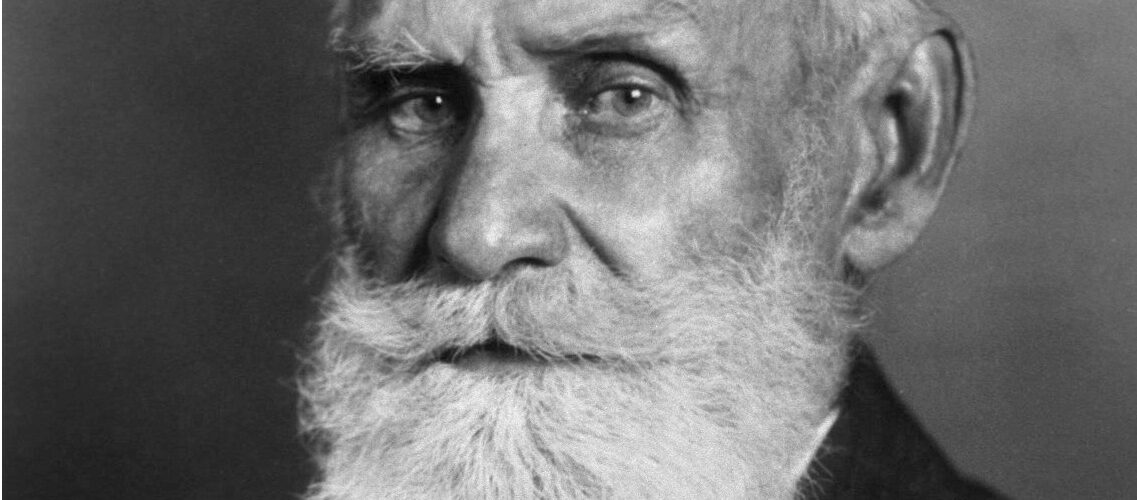A Pavlov Primer: A Guide to the Work of Ivan P. Pavlov
- May 14, 2016
- Posted by: Administrator
- Category: Psychology Explained,

“Science demands from a man all his life. If you had two lives, that would not be enough for you. Be passionate in your work and in your searching.”– Ivan Pavlov
Ask anyone who has ever taken Psychology 101 about Ivan Pavlov and he’ll most likely talk to you about drooling dogs. Unfortunately, that’s about all he’ll remember.
In fact, though most people think of Pavlov as a psychologist, he really wasn’t. The Russian son of a priest, Ivan Pavlov was initially primarily interested in digestion, was trained as a physician, and spent ten years working at a veterinary institute. His work, though certainly contributing to the field of psychology, was honored by a Nobel Prize in Physiology and Medicine.
He became interested in research that demonstrated techniques of studying reactions to the environment in an objective, scientific method. In psychology, that’s harder than it seems. With dogs, it involved surgically implanting tubes to measure their saliva.
What about the Dogs?
While Pavlov was focusing on his digestive system research, he and his assistants would introduce both edible and non-edible items to their lab dogs. They would then measure the amount of saliva produced by the dogs.
Over time, Pavlov realized that the dogs would begin salivating even before the food was introduced, whenever he or his assistant would enter the room. Consequently, he decided to investigate this “psychic secretion,” as he called it.

The results of the study showed that the dogs began having particular expectations. In other words, they had become conditioned to respond. When he entered the room, the dogs expected food and began salivating in expectation. The salivating was their conditioned response.
As an aside, Pavlov probably wouldn’t win many fans with his method of collecting canine specimens. He explained, “At that time dogs were collected with the help of street thieves, who used to steal those with collars as well as those without. No doubt we shared the onus of the sin with the thieves.”
Conditioned Reflexes
So dogs drool. What’s the big deal? Pavlov’s dogs proved that they could be conditioned, which is a form of learning. The resulting theory proved that animals could be trained, or conditioned, to expect a consequence based on the results of some previous experience. And, if animals could be trained, so could people.
A conditioned reflex is a learned response. When I am driving and see a yellow traffic signal light, I automatically speed up—I mean slow down, of course. I have acquired an automatic response to stimuli—a conditioned or learned reflex. We might call it a habit.
Pavlov actually proved there were two different types of reflexes: unconditioned and conditioned. An unconditioned reflex can be defined as an innate, or automatic, response to stimuli that occurs on its own.
An unconditioned response does not involve learning. For example, when you visit your ophthalmologist and she administers the glaucoma test that releases a small puff of air on to your eye, you will blink and maybe even jump back from the machine. You didn’t have to teach your eyes to blink or your body to respond, they do it unconditionally.
But let’s imagine that your doctor always played a single note before releasing the small puff of air, just as a warning. Eventually you would find yourself blinking and jumping simply when hearing the note, even if the air puff never hit you. You have been conditioned to expect the puff when you hear the note play and your body reacts accordingly.
A Lasting Legacy
Pavlov’s ideas are still discussed in educational theory today. Other key terms he developed related to learning include stimulus generalization, extinction, spontaneous recovery, discrimination, and higher-order conditioning.
Ever the scientist, Pavlov was working and recording until his very last moment of life. Amazingly, he asked one of his student assistants to sit beside him at his bedside and to record the circumstances of his dying. Even then, he was determined to record unique evidence of the subjective experiences of death.
References
I.P. Pavlov Museum-Apartment. While the museum is located in Russia, the website itself is a fascinating look at his interests, research and artifacts, including a butterfly collection from his youth. Retrieved 2 April 2010.
Klein, Stephen B. & Mowrer, Robert R. (1989) Contemporary Learning Theories: Pavlovian Conditioning and the Status of Traditional Learning TheoryHillsdale, NJ: Lawrence Erlbaum Associates.
Pavlov, I. P. (1927). Conditioned reflexes. London: Routledge and Kegan Paul.
Pavlov, I.P. (1929) Lectures on Conditioned Reflexes: Twenty-Five Years of Objective Study of the Higher Nervous Activity Behavior of Animals. Nature, 124, 400-401, doi:10.1038/124400a0
Pavlov, I. P. (1994) Psychopathology and Psychiatry. London: Routledge and Kegan Paul.
Pavlov, I. P. (1927). Conditioned reflexes. London: Routledge and Kegan Paul.
